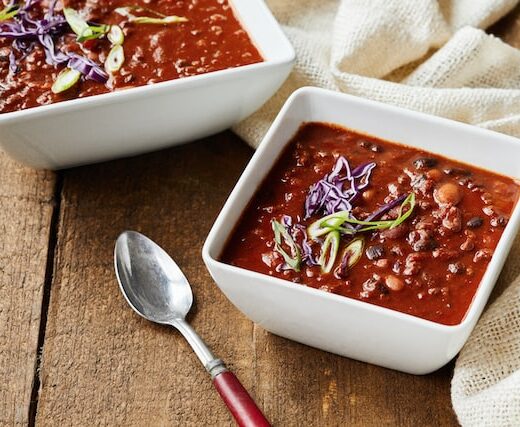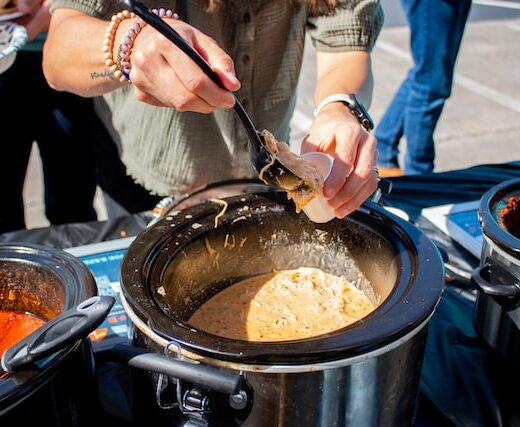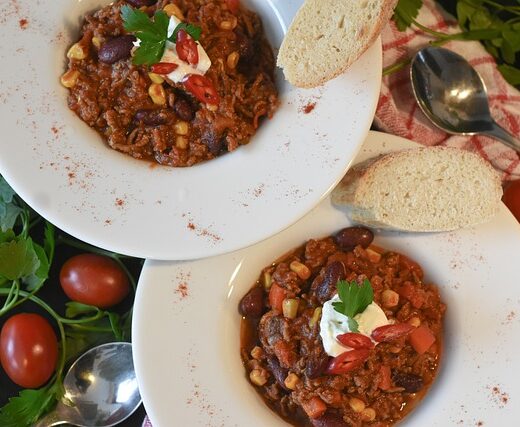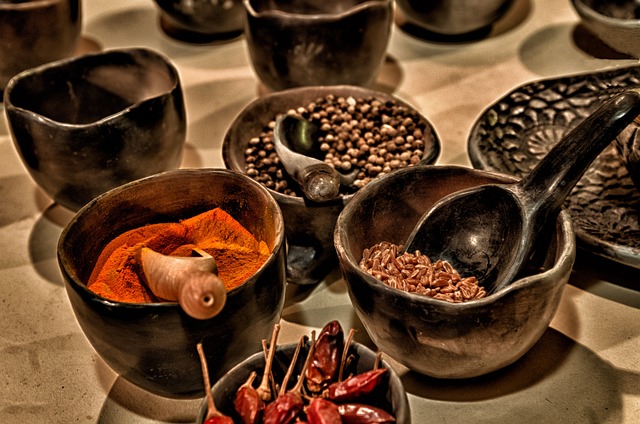When writing this essay, I had my first “aha!” moment when I realized that, depending on where you are from, the word “chili” might be spelled in various ways. The British spell it chilli, while Hispanics spell it chile. Americans spell it chili. To prevent the red lines caused by word processing, I’ll spell it chili even though I’m from the chilli state of Illinois. More on that later.

The history of chili.
Few topics in American culinary culture are as divisive as writing about chili; doing so invites conflict. It appears that everyone is in agreement about what they believe chili should be and that everyone else is mistaken. What paella or Bolognese is to Spaniards or Italians, chili is to Americans.
I can’t say that I am an expert on chili, but I do have a preference that I’ll keep to myself. I didn’t eat it growing up, and I’ve never really understood why people get so worked up over something that is, at its core, just a great stew.
However, I have enjoyed chili and tried various variations, and anything that sparks such a contentious discussion merits more investigation. Therefore, I set out to identify and define the various types of chili that my fellow Americans enjoy to deepen my awareness of this distinctly American phenomenon.

Just a bit of background information.
Chili con carne, a dish produced by stewing red meat (either crushed, diced, or chunked, in a chili-pepper-based sauce that almost always incorporates cumin, is what most people mean when they utter the word “chili.”
Although the dish’s origins are unknown, the International Chili Society (ICS) claims that it is widely believed that cattle drivers in the Southwest invented and popularized it. However, there is historical proof of women who set up chili stands in Texas in the 1880s, appropriately named “chili queens. There is probably folklore that tells of chili being available in the plaza for some time before that. It is difficult to identify any specific source for such statements.
From those modest beginnings, chili quickly gained popularity nationwide thanks in part to Wolf Brand Chili’s founder Lyman T. Davis, the first person to sell chili in a can. William Frederick Gebhardt had the idea to grind a mixture of dried chilies, especially chili. In 1880, William Gerard Tobin was credited with having the idea to can chili. He also obtained a contract to sell it to the American military, but he passed away before his plans could be carried out.

Chili Cook-offs
Chili cook-offs, which first gained popularity in the 1950s and 1960s, have primarily been responsible for the recent surge in the popularity of chili. (Terlingua, Texas, hosted the inaugural World’s Championship sponsored by the ICS in 1967.)
Chili cook-offs are competitions, of course, and while various parts of the country undoubtedly had strong opinions about their chili before such events, cook-offs have served to codify various chili styles.
Homestyle chili is the only category that allows the use of beans and pasta as fillers. Distinct judging categories for “Homestyle Chili,” “Traditional Red Chili,” “Chili Verde,” and, incongruously, “Salsa.” have been established by the ICS chili cook-off. The Chili Appreciation Society International, the other significant governing body for chili cook-offs, does not identify distinct chili categories in its rules but vehemently forbids beans and other uncommon additions like macaroni, rice, and hominy.
The popularity of chili cook-offs was highlighted as a strong argument for making chili the national food of the nation in a joint resolution that then-Representative James Inhofe of Oklahoma filed on September 26, 1991, in the US Congress. Other quite compelling justifications are provided in the bill’s text as well.

America’s heritage is displayed through its varieties of chilis displaying its highly personalized blending of ingredients and embracing the highly individualistic traits of American culture. Chili has economically nourished countless millions of Americans with its succulent, distinctive blending of meats and spices since its inception in the 19th centur.
This notion was not first proposed by Inhofe, who currently serves his state in the US Senate; other members of Congress had put forth comparable joint resolutions over the preceding seven years. In the 1980s, New Mexico representative Manuel Lujan Jr. unsuccessfully proposed various measures to designate “chile”—not just chili—as the nation’s national dish.
In an attempt to impose Texas’ preferred chili-and-meat stew on the rest of the country, Texas Representative J. J. Pickle of Texas introduced legislation in 1988 that called for “chili without beans” to be designated as the official food of the United States. This attempt was audacious but ultimately unsuccessful.
Aside from the apparent cui bono, one of the more puzzling features of these resolutions is the notion that a dish as contentiously contested as chili could be recognized as a national food by anyone, much less the fractious body of Congress. Despite the codification of many chili varieties for chili cook-offs, impassioned debates regarding the dish’s primary ingredients and exact name spelling continue to rage across the nation. The same cannot be true for chicken breast, pizza, burgers, and fries.

As a result, there are considerably more chili variations than the three that the International Chili Society (ICS) permits into a competition, despite efforts on the part of many, including it. Any aspiring expert should be familiar with the sorts of chili below in brief.
That is a lot of background information on chili. The numerous varieties of chili from all regions of the United States will be broken down in Part 2.

Leave a Reply